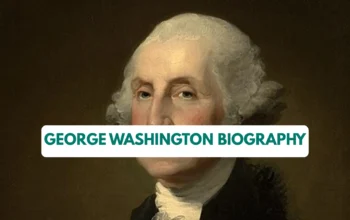Fidel Castro remains one of the most influential — and most controversial — political figures of the 20th century.
From his origins on a sugar plantation in eastern Cuba to his dramatic guerrilla campaign and eventual decades-long leadership of Cuba, Castro’s life shaped not only his island nation but also Cold War geopolitics and revolutionary movements across Latin America and the developing world. This biography traces his life, major policies, controversies, and the legacy he left behind.
Bio Data
- Full Name: Fidel Alejandro Castro Ruz
- Born: August 13, 1926
- Age: 90 (at time of death)
- Death: November 25, 2016
- Birthplace: Near Birán, Oriente Province, Cuba
- Nationality: Cuban
- Occupation: Revolutionary leader, Head of State of Cuba (Prime Minister/President)
- Parents: Father: Ángel María Bautista Castro y Argiz ; Mother: Lina Ruz González
- Siblings: Including Raúl Castro (brother)
- Spouse: First wife: Mirta Díaz‑Balart (married 1948–1955)
- Children: At least one son: Fidel Castro Díaz‑Balart (nicknamed “Fidelito”), born 1949.
Early life and education
Fidel Alejandro Castro Ruz was born on August 13, 1926, in the small town of Birán in Oriente Province, eastern Cuba. Raised on his family’s sugar estate, his early years combined rural labor with formal schooling: he attended several Jesuit-run schools and later moved to Havana to study law at the University of Havana. As a student and young lawyer Castro became politically active, defending the poor and speaking out against corruption and the social inequalities that plagued Cuban life. (Sources: Britannica; History.com)
Political awakening and early activism
During the late 1940s and early 1950s, Castro emerged as a vocal critic of Cuban elites and foreign influence. In 1952, when General Fulgencio Batista seized power in a coup, Castro turned from legal activism to direct action. He organized and led an armed assault on the Moncada Barracks in Santiago de Cuba on July 26, 1953 — an attack that failed militarily but succeeded in announcing a new revolutionary movement. After his imprisonment and subsequent exile, Castro organized the 26th of July Movement in Mexico and planned a return to Cuba. (Sources: Wikipedia; History.com)
The guerrilla war and victory (1956–1959)
In December 1956 Castro and about 80 followers returned to Cuba aboard the yacht Granma and began a guerrilla campaign from the Sierra Maestra mountains. Over the next two years his forces gained recruits and popular support, combining guerrilla warfare with a message of social justice that appealed to peasants, workers, and students. By January 1959, Batista’s government had collapsed; Castro’s rebel forces entered Havana and he became the dominant figure in the new revolutionary government. (Source: Wikipedia)
Consolidation of power and alignment with communism
After the revolution, Castro initially held the post of prime minister and later consolidated authority as head of state. Over the next several years he moved Cuba toward a socialist system: nationalizing large swathes of industry and land, instituting state-run programs in health and education, and aligning Cuba strategically with the Soviet Union during the Cold War. By the end of 1961 he had publicly identified with Marxist-Leninist ideas and Cuba became the first communist state in the Western Hemisphere. (Source: Britannica; Time)
Major events: Bay of Pigs, Cuban Missile Crisis, and international influence
Castro’s rule faced immediate external threats. In April 1961 an exiled Cuban force, trained and supported by the U.S., attempted an invasion at the Bay of Pigs and was defeated — a major propaganda victory for Castro. In October 1962 Cuba played a central role in the Cuban Missile Crisis, which brought the world to the verge of nuclear conflict when the Soviet Union placed ballistic missiles on the island. Internationally, Castro supported leftist movements and governments — sending advisers and troops to conflicts in Africa and Latin America — and became a symbol of anti-imperialist resistance for many around the globe. (Sources: Wikipedia; Time)
Domestic policies, achievements, and criticisms
Under Castro, Cuba made measurable gains in social areas: literacy campaigns reduced illiteracy, and Cuba developed a health-care system that produced strong public health metrics relative to many low- and middle-income countries. At the same time, Castro’s government curtailed political dissent: opposition parties were not tolerated, and international human-rights organizations documented restrictions on political freedoms and press freedom. The decades-long U.S. embargo and central planning produced significant economic challenges and periodic scarcity for ordinary Cubans. (Sources: Britannica; Wikipedia)
Leadership style and personal life
Fidel Castro was known for long, often fiery public speeches and for cultivating a charismatic persona: military fatigues, a beard, and a reputation as a tireless revolutionary. He fathered several children and had a complicated personal life that included intermittent public appearances after he handed over power in the 2000s. He temporarily transferred power to his brother Raúl Castro in 2006 and officially retired in 2008. (Source: Wikipedia)
Retirement and death
Castro’s health declined in the 2000s. He stepped down from official duties in 2008, ceding formal power to his younger brother Raúl Castro after a period of illness that began in 2006. Fidel Castro died on November 25, 2016, at the age of 90; his death prompted national mourning and a long funeral procession across the island before his ashes were interred in Santiago de Cuba. (Sources: History.com; Wikipedia)
Legacy: contested and enduring
Fidel Castro’s legacy is sharply divided: admirers point to gains in health and education and to national sovereignty; critics emphasize political repression, economic mismanagement, and human-rights abuses. He remains a central figure for anyone studying Cold War history, revolutionary movements, and modern Cuba.
Frequently Asked Questions (FAQ)
When and where was Fidel Castro born?
August 13, 1926, in Birán, Oriente Province, Cuba.
What role did Castro play in the Cuban Revolution?
He led the 26th of July Movement, waged guerrilla war, and helped overthrow Batista in 1959.
Was Fidel Castro always a communist?
No — his politics shifted from nationalist and reformist to Marxist-Leninist by late 1961.
When did Castro step down?
Temporarily in 2006 due to illness and formally in 2008; he died in 2016.
Conclusion
Fidel Castro’s life is a complex mix of revolutionary zeal, social reform, global influence, and authoritarian rule. His biography helps explain modern Cuba and the wider ideological struggles of the 20th century. Whether praised or condemned, his impact endures in history.




